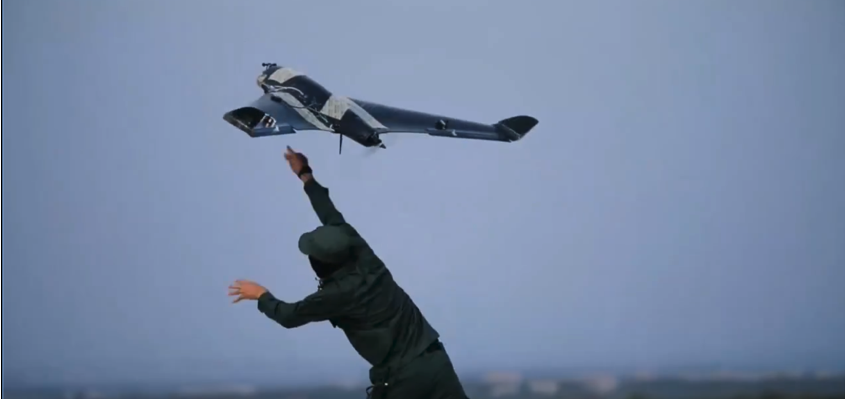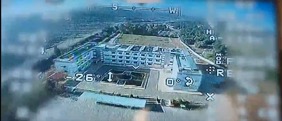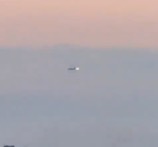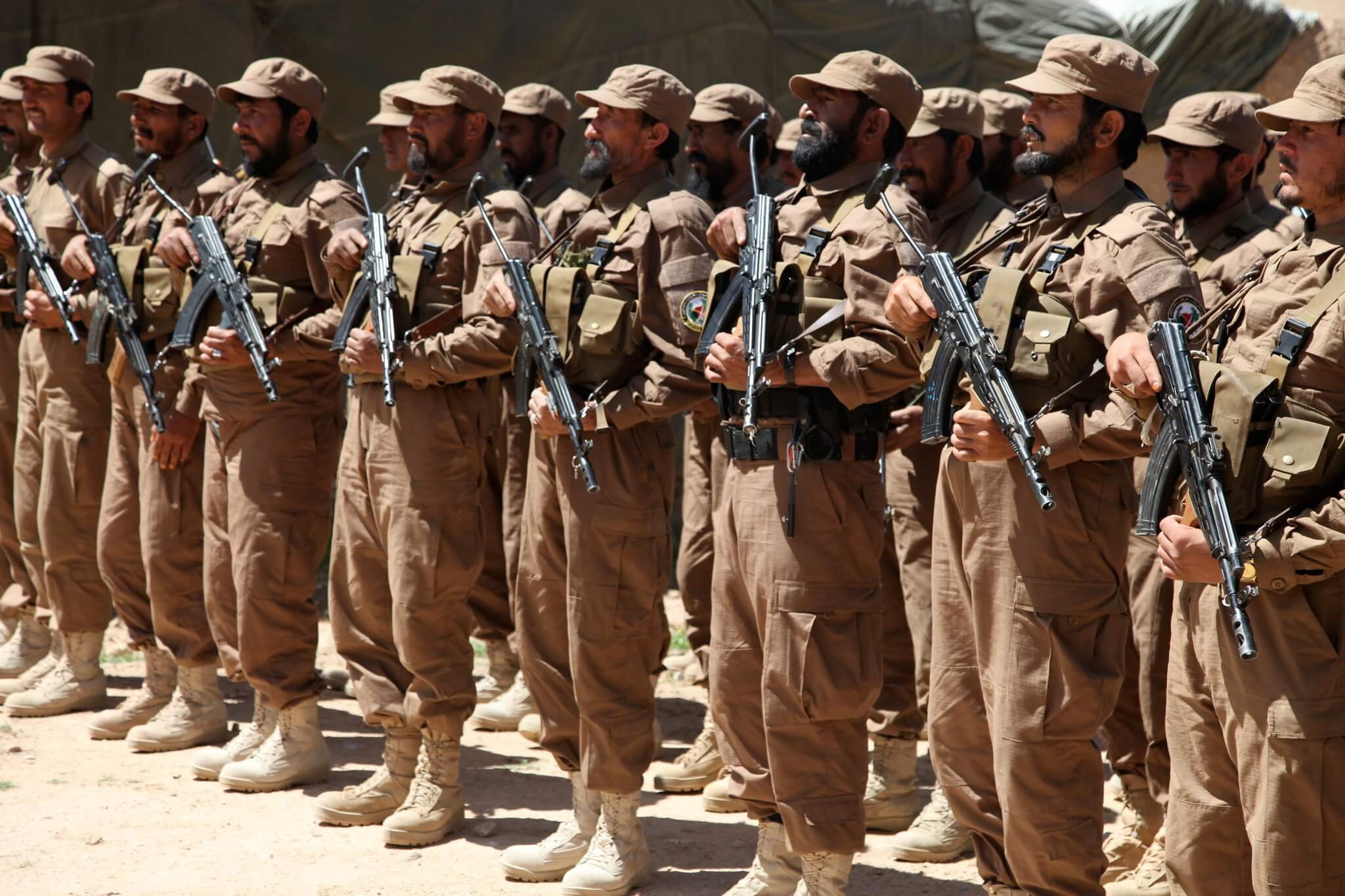Hayat Tahrir al-Sham’s Drone Force

Published by The Lawfare Institute
in Cooperation With

Editor’s Note: Hayat Tahrir al-Sham’s remarkable success in conquering much of Syria relied in part on the group’s impressive use of drones. Rueben Dass of the S. Rajaratnam School of International Studies details HTS’s drone systems, the way the group developed them, and how its fighters have used them to overwhelm their adversaries.
Daniel Byman
***
On Dec. 8, Hayat Tahrir al-Sham (HTS), a militant Islamist group based in Idlib, ousted Bashar al-Assad’s regime in Syria after taking control of the country’s capital city of Damascus. The takeover was a result of a combination of two lightning offensives dubbed Operation Deter Aggression and Operation Dawn of Freedom, aimed at taking control of strategic cities and expanding the borders of HTS’s control within the country.
HTS’s use of drones significantly aided their offensive, helping them stave off regime forces and gain substantial ground in a relatively short period of time. Its development of this technology was facilitated by its control of territory in northwestern Syria, which provided the group a safe haven and sanctuary to innovate and build logistical supply routes for the import of components and expertise. Over the past decade, it has created a thorough infrastructure for manufacturing and employing drones—learning from other battlefields and providing a model for how other non-state actors can learn to pose a threat from above.
The Al-Shaheen Brigade
One of HTS’s earliest recorded drone attacks is believed to have been an attack on Russia’s Khmeimim air base in 2019. HTS subsequently used drones in six other attacks between then and 2023. HTS’s deadliest drone attack occurred in October 2023, when explosive-laden drones hit the military academy in Homs, leaving more than 100 people dead and 125 injured. The government blamed the attack on “armed terrorist organizations,” but it was widely understood to have been carried out by HTS.
The organization’s recent offensive demonstrates the advances that HTS has made in its drone capabilities—in particular, HTS’s Al-Shaheen (Falcon) Brigade. Al-Shaheen is a strategic unit that specializes in the “production, manufacturing and development of advanced drones and weapons.” It has a substantial budget and is believed to be led by an engineer who reports directly to HTS leader Abu Mohammed al-Jolani.
Al-Shaheen has played a pivotal role in the offensive, carrying out numerous attacks on regime targets—including army trucks, tanks, large troop gatherings, hilltop artillery positions, and helicopters. The unit was also allegedly responsible for the assassinationof Brig. Gen. Uday Ghasa, head of the Military Security Branch of the Syrian Arab Army (SAA) in Hama. At least two other senior SAA commanders have been killed in similar drone strikes, namely Brig. Gen. Hisham al-Hakim and Brig. Gen. Ayman Melhem. Syria expert Charles Lister notes that Al-Shaheen was carrying out as many as 20 drone strikes on regime forces each day during the offensive.
The unit has been experimenting with drones for the past 10 years. The weapons are developed in small workshops based in houses, garages, converted schools, and warehouses—places that are difficult to detect. HTS is also believed to be running a drone academy where members of the Al-Shaheen unit receive specialized training. Photos and videos posted on social media show unit members undergoing training to learn how to remotely control these systems using video games and practice targets.

Figure 1. Al-Shaheen members are trained using video games. Photo credit: HTS media via @BroderickM_/X.com.

Figure 2. An HTS instructor trains members of Al Shaheen. Photo credit: HTS media.
HTS has dispersed its drone manufacturing operations. In February 2024, HTS was reportedly operating a drone factory in Ain al-Beida, a town in northwestern Syria. Before that, in May 2023, the Russian air force destroyed a drone manufacturing facility in Idlib. Other sources have noted drone manufacturing facilities in Sarmada, close to the Syrian-Turkish border.
Al-Shaheen’s Drone Arsenal
Al-Shaheen has employed two general types of drones in the conflict thus far: short-range quadcopter drones and longer-range fixed-wing drones. These categories of drones have first-person-view (FPV) capabilities, with cameras that transmit live footage, allowing pilots to remotely control and navigate the drones to their targets.
The quadcopter drones are often used as bomb couriers, dropping improvised munitions and explosive devices on regime targets from above. This is similar to the drone tactics employed by the Islamic State during the height of its activity between 2014 and 2018, and drones used to drop small explosives have also been employed in other conflicts, including the wars in Ukraine and Myanmar. In several strikes, HTS has also made use of drones that explode on impact like remotely piloted missiles. Some of HTS’s longer-range drones can carry up to 100 kg of explosives.
The group has developed its own fleet of explosive drones, dubbed “Shaheen” like the name of the unit. These fixed-wing drones were developed from captured Russian and Iranian drones; they are made by HTS and have complex design elements, including cameras for remote navigation. Rebel leaders have told journalists that Shaheen drones have been a “key element” in the offensive and are capable of destroying enemy targets with “less than a five percent error” margin.

Figure 3. Screenshot of video showing first-person video from an HTS drone strike in Hama, Syria. Photo credit: HTS media via @SaladinalDronni/X.com.
Al-Shaheen has also used a larger rocket-propelled drone, which might be a variant of the “Shaheen” drone. These drones mark a significant shift in the tactics and capabilities of HTS. They have a much larger payload capacity and range and are more difficult to intercept. They are probably domestically produced and have been used to strike strategic Syrian, Iranian, Russian and Hezbollah targets. Some sources have noted that these rocket-propelled drones are similar to the Zu’am rockets that HTS has used previously.

Figure 4. Screenshot of a video showing an alleged HTS rocket-propelled drone. Photo credit: HTS media via @clashreport/X.com.
Not all of HTS’s drones have been used to attack targets directly. Al-Shaheen has also used drones for reconnaissance. These drones have provided guidance for missile and drone strikes on regime posts and tanks. The group had also used drones to drop leaflets over civilian areas to encourage defections.
HTS has built complex infrastructure to sustain its use of drones. This has included employing 3D-printing technology to produce parts that cannot be obtained easily from commercial sources.This technology offers the group a useful avenue to produce customizable weapons and weapons parts quickly, easily, on demand, and at lower cost. While 3D printing might not necessarily be able to replace conventionally manufactured parts due to durability issues, it can be a useful supplementary addition to conventional arsenals, which is why Ukrainian forces, Myanmar’s People’s Defense Forces, and the Houthis in Yemen have also used 3D printing to produce drone and other weapons parts.
Tech-Driven Adaptation
Al-Shaheen and its proficient use of drones have made a significant contribution in HTS’s offensive in Syria. Charles Lister has described Al-Shaheen as a “hugely valuable force multiplier” in the group’s operations.
HTS has also learned from other groups and conflicts. Their use of quadcopter drones to drop munitions mimics the Islamic State’s previous use of drones in Iraq and Syria. The Islamic State also developed units dedicated to the development of drones, including attempts to repurpose captured U.S. and coalition drones—similar to what HTS has done. HTS’s employment of 3D printing to manufacture drone parts is also likely inspired by its use in the Ukrainian and Myanmar conflicts, where the technology has been used to manufacture weapons to complement conventional arsenals.
HTS’s success in using drones underscores the strategic value of tech-driven warfare. While the use of drones is not new to the region, HTS’s development of an indigenous drone fleet that includes long-range, rocket-propelled drones and employment of 3D-printing technology is a notable advancement. As drone technology and 3D printing become cheaper and more accessible, more groups—groups that could never have built their own air force—will be able to pose a threat from the skies.




